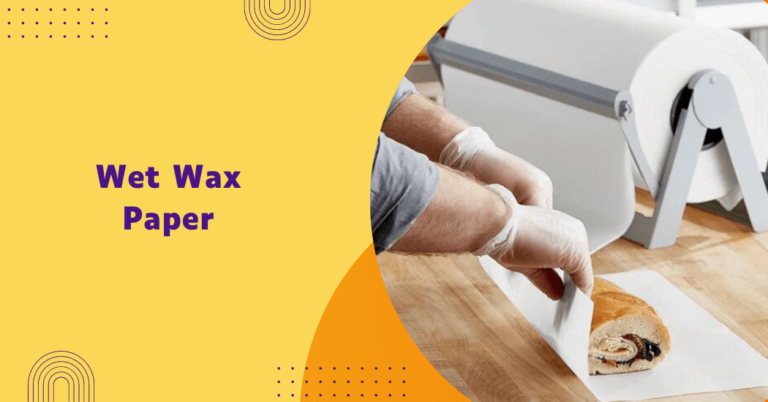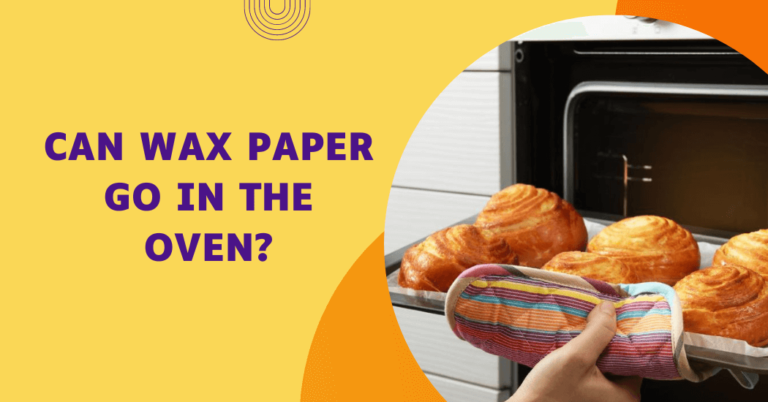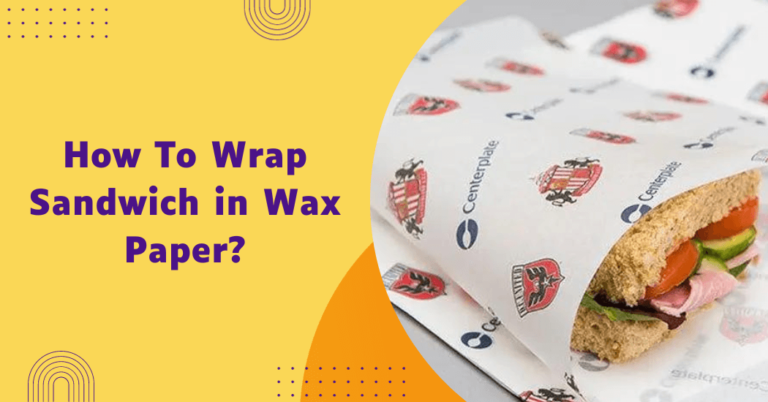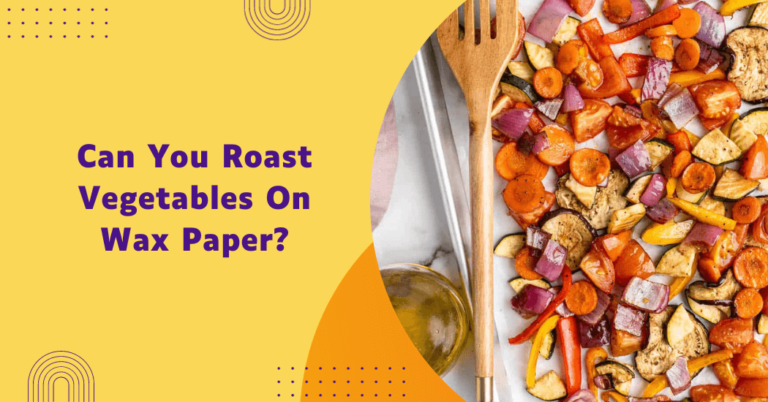Does wax paper have PFAS?
Do you ever use wax paper? Many of us rely on wax paper in our kitchens for various purposes like wrapping sandwiches, covering cheese trays and facilitating easy cake decorating. While we enjoy this product’s convenience, many are left wondering “Does wax paper contain potentially harmful chemicals such as PFAS?”
In this article, we aim to demystify this question, delving specifically into the composition of wax paper and whether or not it contains (PFAS).
Furthermore, we will shed light on the possible health implications associated with exposure to PFAS and provide some practical tips to help limit your exposure to PFAS while cooking and baking. So stay tuned!
What is PFAS?
Per- and poly-fluoroalkyl substances (PFAS) are a group of man-made chemicals that have been in use since the 1940s. Found in a wide array of consumer goods, these chemicals are known for their ability to resist heat, water and oil.
They are used in products such as non-stick cookware, water-repellent clothing, stain-resistant fabrics and carpets and some cosmetics and products that resist grease, water and oil.
However, due to their persistence in both the environment and the human body, they are often referred to as “forever chemicals”. Exposure to certain PFAS can lead to adverse health outcomes in humans, which is why their presence in everyday products like wax paper can be a cause for concern.
Does the wax paper contain PFAS?
The short answer is, not necessarily. Wax paper, commonly used in kitchen settings, is typically coated with either paraffin or soybean wax. These waxes are known to provide the paper with its unique properties of water resistance and low stick. Importantly, wax paper is not typically treated with PFAS to achieve these characteristics.
Therefore, under normal conditions, you would not expect to find PFAS chemicals in your standard wax paper. However, the composition can vary across brands and it’s always a good idea to check the product labels or reach out to the manufacturer if you have specific concerns.
Remember, while the wax paper itself may not contain PFAS, other kitchen products may, so it’s essential to stay informed about the products you frequently use.
Also Read: Does Parchment Paper Have Wax?
How to check if the wax paper contains PFAS?
If you want to check whether your wax paper contains PFAS (per- and poly-fluoroalkyl substances), you can follow these steps:
- Check the packaging or labeling: Look for any information on the packaging or labeling of the wax paper. Manufacturers may indicate whether their products are free of PFAS or other harmful chemicals. However, keep in mind that not all products may have clear labeling about PFAS content.
- Contact the manufacturer: Reach out to the manufacturer of the wax paper. Contact their customer service or support department and inquire about the presence of PFAS in their product. Ask if they have conducted any testing for PFAS content and if they can provide you with relevant information.
- Research the brand: Research the brand of wax paper online. Check their website and any available product documentation. Some brands might highlight their commitment to producing PFAS-free or non-toxic products.
- Third-party certifications: Look for third-party certifications or seals on the packaging. Certain certifications, such as “PFAS-Free” or eco-friendly labels, may indicate that the product does not contain PFAS. Look for reliable and well-known certification organizations.
- Independent testing: If you’re concerned about the PFAS content and none of the above methods provide clear information, you could consider sending a sample of the custom wax paper for restaurants to a laboratory for testing. Some laboratories offer PFAS testing services. This option, however, might be more expensive and time-consuming.
- Check online resources: Environmental organizations, consumer advocacy groups and government agencies might publish information about products containing PFAS. Search online to see if there are any reports, studies or articles discussing the PFAS content in wax paper or similar products.
- Alternative choices: If you’re unable to verify whether a specific wax paper contains PFAS, you could consider switching to products that are explicitly labeled as PFAS-free or exploring alternatives such as unbleached parchment paper or reusable silicone baking mats.
Remember, regulations and product information can vary by region, so it’s important to stay informed about any updates regarding PFAS and related regulations.
Health concerns associated with PFAS
The health implications of Per- and poly-fluoroalkyl substances (PFAS) exposure have been researched extensively. Studies have shown that PFAS can build up and persist in the human body over time, leading to a condition commonly referred to as ‘bioaccumulation’. This build-up of chemicals can potentially lead to several adverse health effects.
Exposure to certain PFAS may affect a person’s health in various ways. Some of the health concerns associated with PFAS exposure include:
- Cancer: Some research has suggested that certain PFAS may increase the risk of cancer.
- Reproductive and developmental issues: Studies have linked exposure to certain PFAS with reproductive issues such as decreased fertility, changes in hormone levels and complications during pregnancy.
- Immune system effects: Some studies suggest that long-term PFAS exposure can damage the immune system.
- Thyroid issues: Certain PFAS may interfere with the body’s thyroid hormone levels, which can lead to numerous health issues.
- Kidney and liver damage: Long-term exposure to certain PFAS may damage the liver and kidneys.
It’s important to note that more research is needed to fully understand the health effects of PFAS exposure.
Related Topic: Can you bake cookies on wax paper?
Tips for limiting exposure to PFAS in your kitchen
Given that wax paper is not typically treated with PFAS, there are still other measures you can take in your kitchen to reduce your exposure to these chemicals:
- Avoid using products labeled as “PFOA-free”, “nonstick” or “stain-resistant.” These products might contain related PFAS chemicals.
- When possible, opt for uncoated or ceramic cookware and bakeware as they are less likely to contain PFAS than traditional non-stick cookware.
- Use stainless steel, cast iron and glass containers for food storage instead of plastic.
- To reduce your exposure to PFAS in carpets and furniture, consider purchasing low-emission products or those labeled as “green”, “eco” or “no-VOCs” (Volatile Organic Compounds).
- Avoid using products with a “permanent press” label, as these may contain treatments with PFAS.
- Lastly, make sure to properly dispose of any product containing PFAS according to the manufacturer’s instructions or your local waste management regulations.
It’s important to remain vigilant about our everyday exposure to potentially hazardous chemicals like PFAS.
By following the tips above and staying informed about product labels and certifications, we can all take steps to reduce our exposure to these “forever chemicals” in our kitchens.
Final Thoughts
When it comes to everyday products like wax paper, it’s essential to stay informed about the potential presence of harmful chemicals such as PFAS. Although standard wax paper is not typically treated with PFASs, its presence in other kitchen items should not be discounted.
To be on the safe side, look for products that are explicitly labeled as PFAS-free or eco-friendly and always read product labels carefully. If you’re uncertain about a specific product’s composition, contact the manufacturer for more information.
Additionally, research online resources such as environmental organizations and consumer advocacy groups to stay up-to-date with any new research or regulations regarding PFAS.






